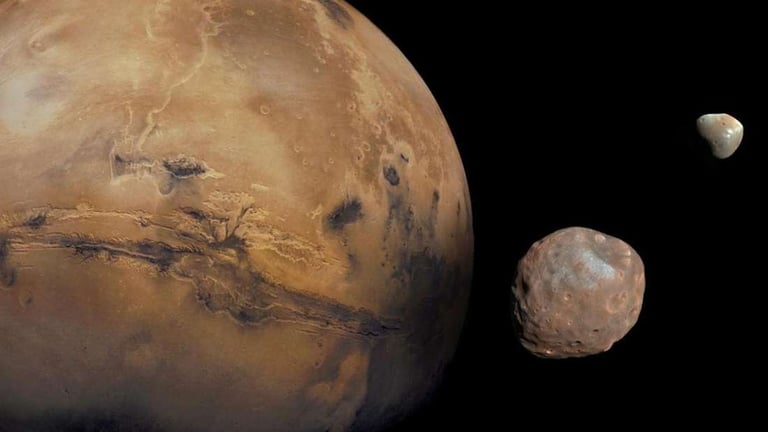NASA Unveils New Theory on Mars Moons' Origins: Shredded Asteroid Hypothesis Gains Traction
November 20, 2024
The findings, published in the journal Icarus on November 20, 2024, indicate that enough fragments could survive collisions to form the moons.
These simulations varied factors such as the asteroid's size, spin, speed, and distance to assess the feasibility of this formation process.
Their theory suggests that an asteroid was disrupted by Mars' gravitational pull, leading to the formation of a disk of debris that eventually coalesced into the moons.
The team conducted extensive computer simulations using advanced computing systems, demonstrating how asteroid debris could scatter into various orbits around Mars.
Kegerreis emphasized the importance of exploring new models for the moons' origins, as they are unique in being the only moons orbiting a rocky planet besides Earth.
A research team led by Jacob Kegerreis at NASA's Ames Research Center has proposed a new hypothesis regarding the origins of Mars' moons, Phobos and Deimos.
Phobos and Deimos are characterized by their small size, irregular shapes, and low density, which have long puzzled scientists.
This research is a collaboration between NASA Ames and Durham University, supported by the Institute for Computational Cosmology, highlighting the interdisciplinary effort in understanding moon formation.
Studying Phobos and Deimos not only sheds light on their origins but also enhances our understanding of moon formation around exoplanets, expanding knowledge of planetary systems.
Kegerreis and his team aim to gather more data on their formation theory before the MMX mission, hoping to simulate the entire formation process in detail.
Upcoming missions, including the Japanese Martian Moons eXploration (MMX) set to launch in 2026, aim to further investigate these moons and collect soil samples from Phobos.
The analysis of these samples could provide crucial insights; if they resemble Mars' composition, it would support the giant impact theory, while similarities to asteroids would favor the shredded asteroid hypothesis.
Summary based on 4 sources
Get a daily email with more Space News stories
Sources

NASA • Nov 20, 2024
Making Mars' Moons: Supercomputers Offer ‘Disruptive’ New Explanation - NASA
Science News • Nov 20, 2024
Mars’ potato-shaped moons could be the remains of a shredded asteroid